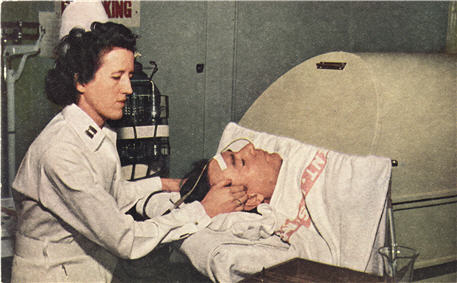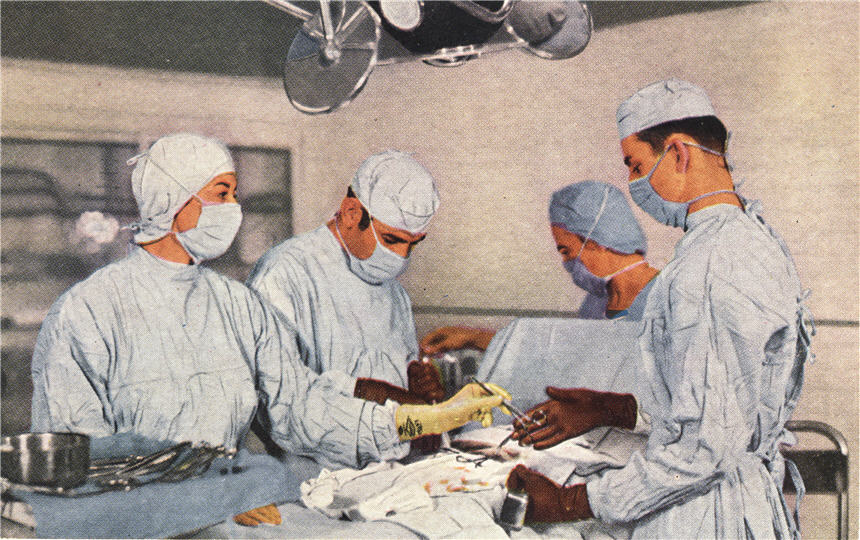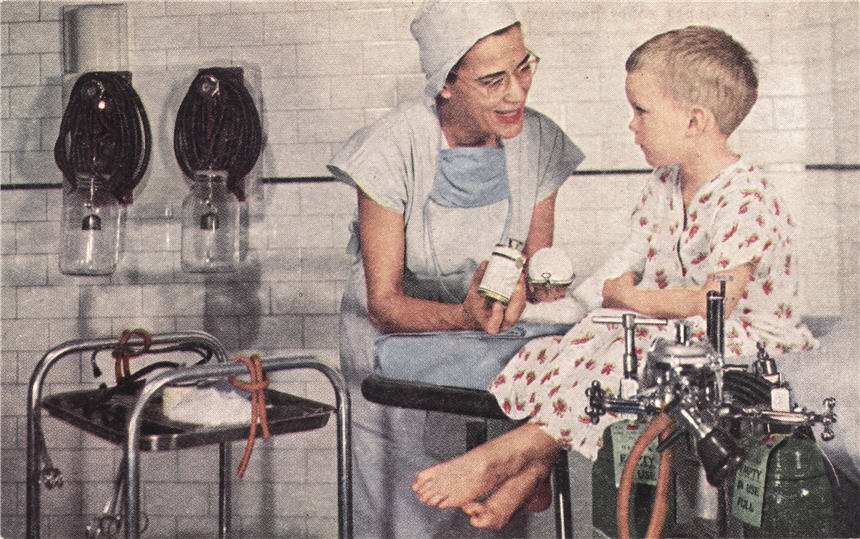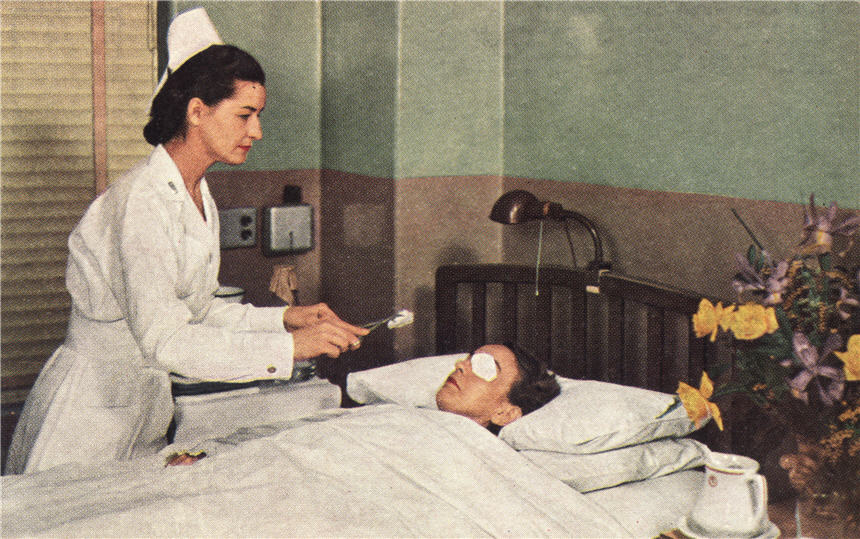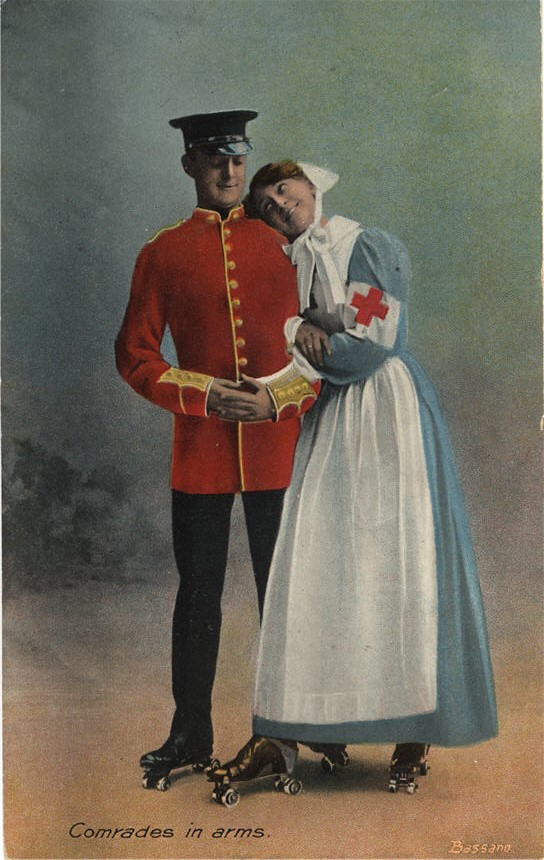ExhibitionThe Art of Nursing
Popular art during the 19th century favored a sentimental use of nursing archetypes such as the “angel” or “mother.” On Valentine and “get well” cards, the use of word play and innuendo often revealed an undercurrent of sexual fantasy. As the 20th century progressed, advertising images of nurses frequently featured increasingly saucy, sexualized representations of women.
Since the 1980s, nurses have become far more aware of their public image and they are keen to update the archetypes that have dominated in the past. Nursing is skilled work and nurses are expert members of the modern health care team. Contemporary publicity and promotional materials include more accurate representations of nurses and nursing.



